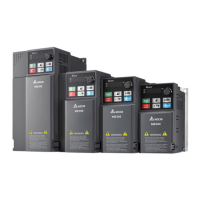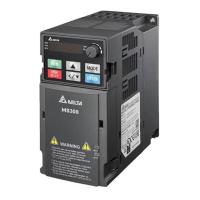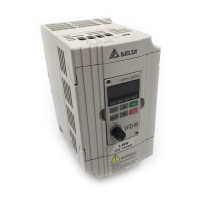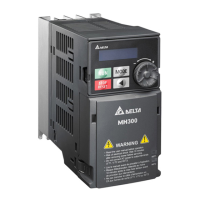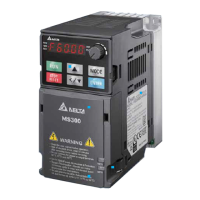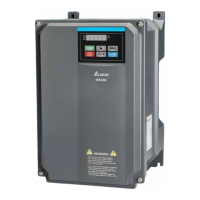Chapter 12 Description of Parameter Settings
ME300
Default: 1.00
Settings
0.0
–1000.0 (When Pr.08-23 bit1 = 0)
0.00
–100.00 (When Pr.08-23 bit1 = 1)
1.0: Kp gain is 100%; if the setting is 0.5, Kp gain is 50%.
Eliminates the system error; usually used to decrease the error and get faster response speed.
If you set the value too high, it may cause system oscillation and instability.
If you set the other two gains (I and D) to zero, proportional control is the only effective
parameter.
Default: 1.00
Settings 0.00–100.00 sec.
Use the integral controller to eliminate the error during stable system operation. The integral
control does not stop working until the error is zero. The integral is affected by the integral time.
The smaller the integral time, the stronger the integral action. It is helpful to reduce overshoot and
oscillation for a stable system. Accordingly, the speed to lower the steady-state error decreases.
The integral control is often used with the other two controls for the PI controller or PID controller.
Sets the integral time of the I controller. When the integral time is long, there is a small I controller
gain, with slower response and slow external control. When the integral time is short, there is a
large I controller gain, with faster response and rapid external control.
When the integral time is too short, it may cause system oscillation.
Set Integral Time to 0.00 to disable the parameter Pr.08-02.
Default: 0.00
Settings 0.00–1.00 sec.
Use the differential controller to show the system error change, as well as to preview the change
in the error. You can use the differential controller to eliminate the error in order to improve the
system state. Using a suitable differential time can reduce overshoot and shorten adjustment time;
however, the differential operation increases noise interference. Note that a too large differential
causes more noise interference. In addition, the differential shows the change and the differential
output is 0 when there is no change.
Note that you cannot use the differential control independently. You must use it with the other two
controllers for the PD controller or PID controller.
Sets the D controller gain to determine the error change response. Using a suitable differential
time reduces the P and I controllers overshoot to decrease the oscillation for a stable system. A
differential time that is too long may cause system oscillation.
The differential controller acts on the change in the error and cannot reduce the interference. Do
not use this function when there is significant interference.
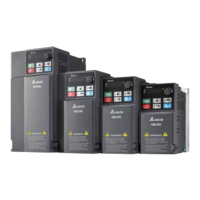
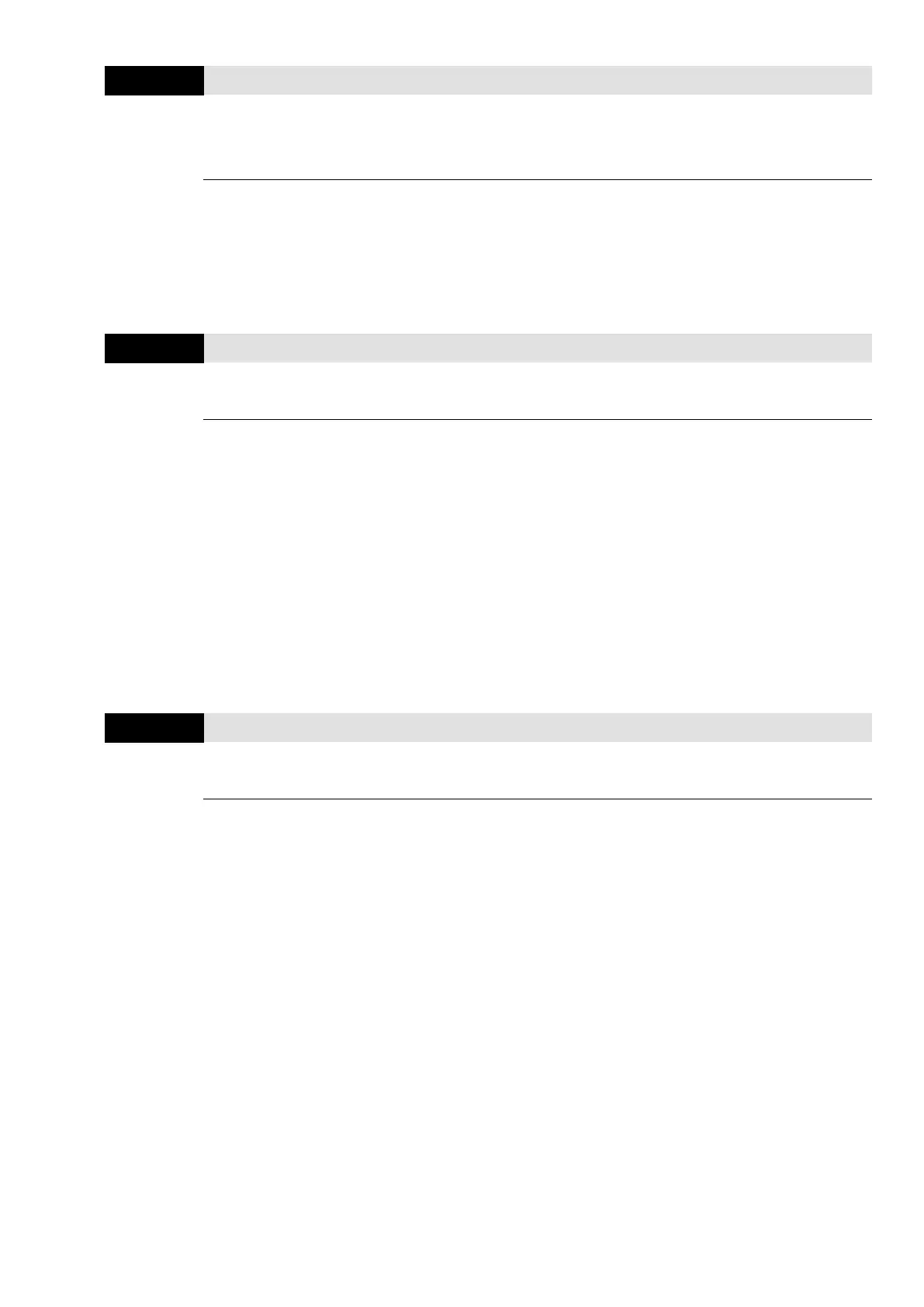